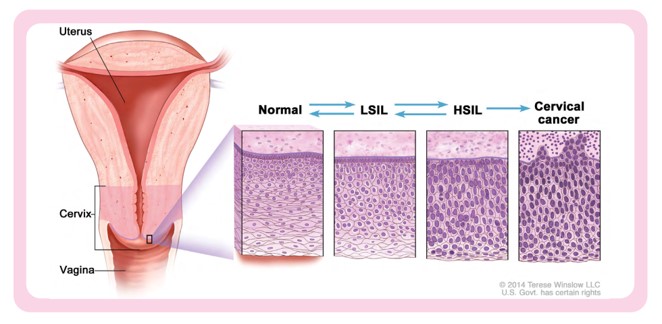Cancer of the uterine cervix is a public health challenge in India, which accounts for one-fifth of the world’s burden of this cancer. It is the second leading cause of cancer incidence and mortality in Indian women after breast cancer.
The cervix is a tissue that connects the uterus and the vagina. The cervix has two regions:
- The outer region called ectocervix is closest to the vagina which is visible during the gynaecologic examination. ectocervix is covered with thin, flat squamous cells.
- The inner region called endocervix is closest to the uterus is covered with columnar glandular cells.
The region where both cell types come together is called the transformation zone or squamocolumnar junction. Most cervical cancers develop in this area.

Human Papilloma virus (HPV) infection is the major cause of precancerous lesions. A majority of HPV infections are asymptomatic and resolve spontaneously. Persistent infection with HPV may lead to cervical intraepithelial neoplasia (CIN) which slowly progress to cause cervical cancer.
Cervical cancer is an eminently preventable disease - Recognized facts
- The natural history of the disease has been known for decades. There is a long precancerous phase lasting anything up to 10 years.
- There are a proven screening methods that can be used in a population-based program to detect and treat at an early stage of the disease, viz. visual inspection and acetic acid (VIA) and the PAP smear, together with colposcopy and Loop electrosurgical excision procedure (LEEP).
- The recent understanding that greater than 90% of the common cervical cancers are caused by high-risk variants of HPV acquired through sexual intercourse. The cervix is at its most vulnerable to HPV infection in young women in their teens and early twenties.
- Today, HPV can be detected by more accurate molecular methods by testing cervico-vaginal secretions.
- An effective vaccination against the high-risk strains of HPV.
(Reference: Position paper of the Indian Cancer Society on Control of Cervical Cancer In India. January 2024)

